Reflect. Write. Repeat.

For four days at Oberlin's inaugural Rubin Institute for Music Criticism, everybody's a critic
by Heidi Waleson
Photographs by Nannette Bedway & Dale Preston '83
It started with a dedicated man’s idea: Stephen Rubin, a distinguished book publisher with a passion for music, was concerned about the state of music criticism and wanted to do something about it. He shared his idea with Conservatory dean david H. Stull ’89, and Stull ran with it. In January 2012, the inaugural Rubin Institute for Music Criticism unfolded over four days on the Oberlin campus.
Rubin and Stull invited a panel of prominent critics to town and set them loose on 10 students, who had prepared by taking a semester-long class in music reviewing. they would attend four live concerts (part of Oberlin’s prestigious Artist Recital Series) and write over- night reviews, which would be assessed by the critics in seminar sessions the following morning. In addition, each critic would deliver an address and participate in public discussions. At the end, one student would be awarded $10,000 to seek further training in criticism.
As one of the invited critics, I was curious to see how the academic world and the “real” world of professional criticism would intersect. How would the students react to the critics, who believe that our job is to speak the truth as we see and hear it, without pulling any punches? After all, many would be performance majors from the conservatory, possibly already imbued with a sense that the critic is the musician’s adversary. How would we fare in the classroom? Some of the critics had teaching experience, while others did not.
Would the public have any interest in the open sessions? And does anybody other than Stephen Rubin really care about classical music criticism?
As it turns out, they do. For those few days, Oberlin felt like the center of the musical world. excitement surrounded the four international-quality, sold-out concerts in Finney Chapel. the students grappled with how best to evaluate their experiences, and the senior critics debated how best to direct them.
As a college and a conservatory, Oberlin fosters both the study of the humanities and the training of professional musicians, and during the Rubin Institute, those two educational strands met and mingled in an unusual and powerful way. they also spilled over into something larger: a discussion of how and why we talk and write about music. As one of the critics, Alex Ross of the New Yorker, put it: “Music is inconceivable without language. There is a deep need to talk about the musical experience.” Musicians, critics, professors, academics, and listeners—we were all trying something new. And it was an adventure.
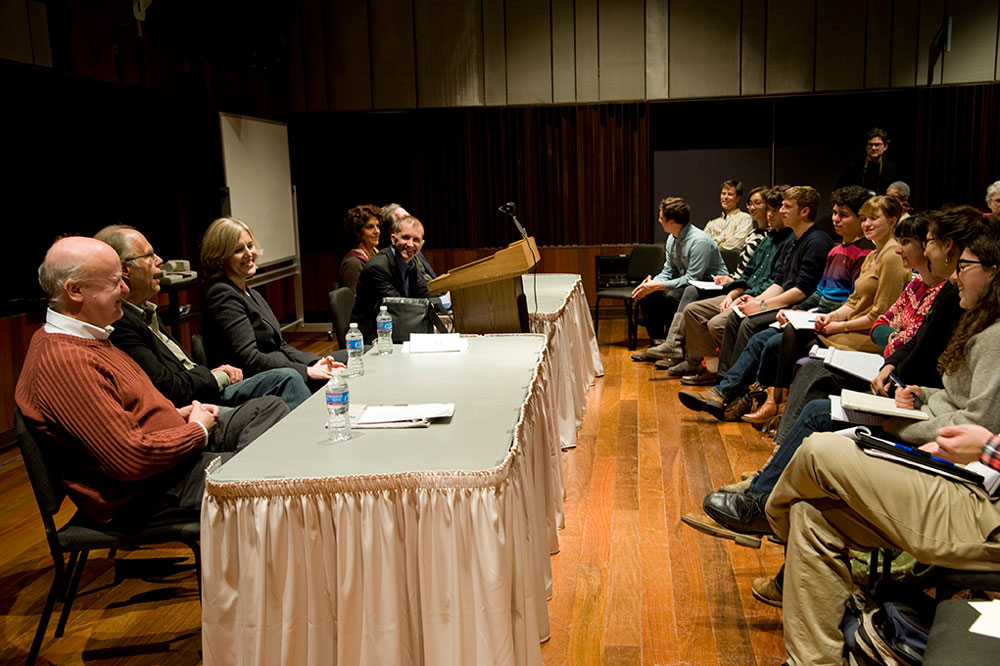 |
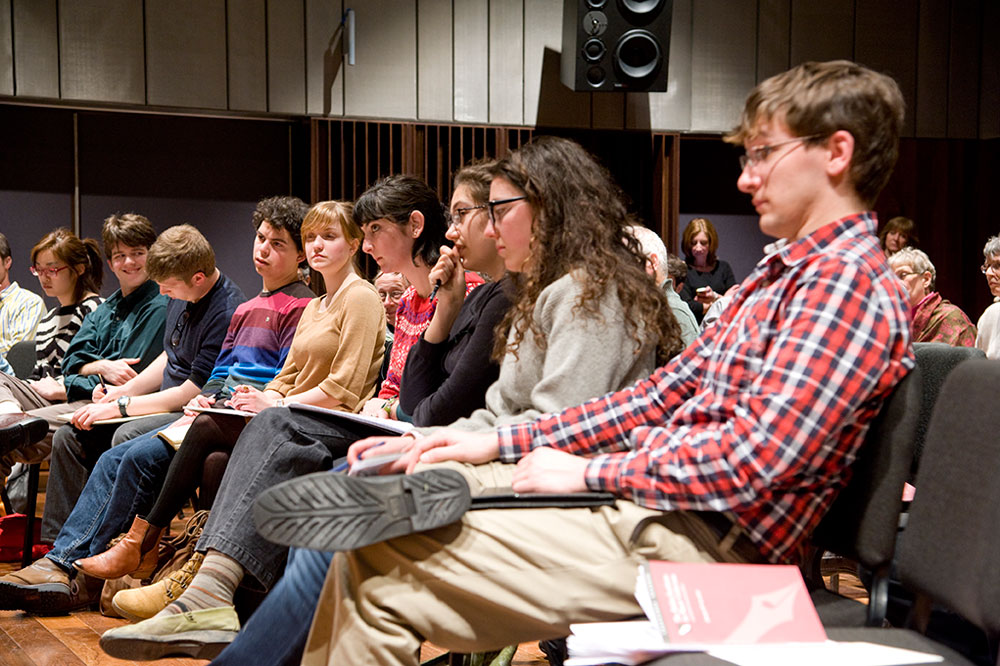 |
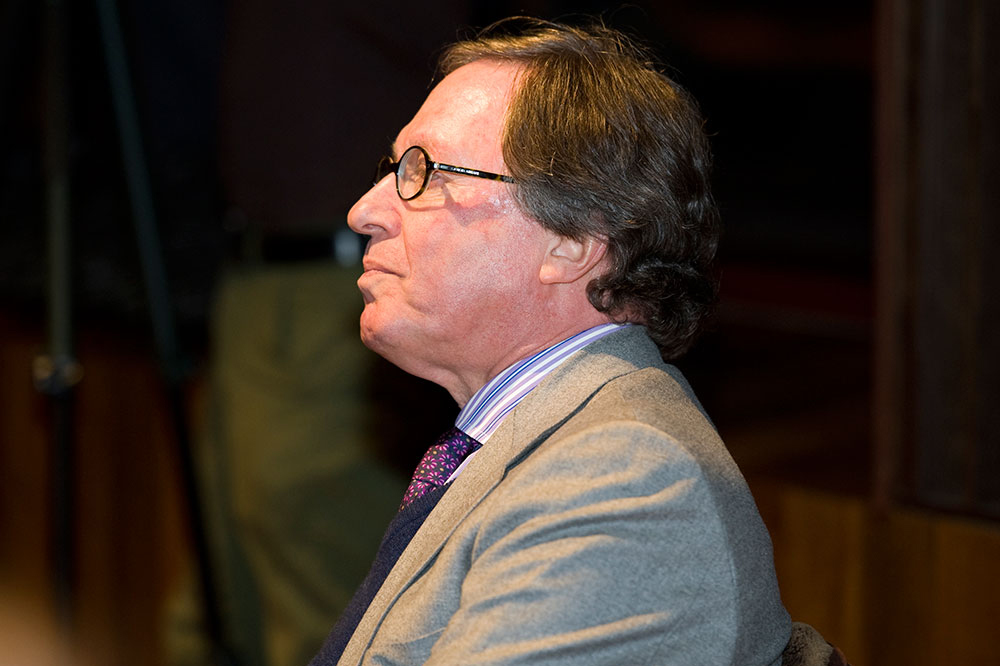 |
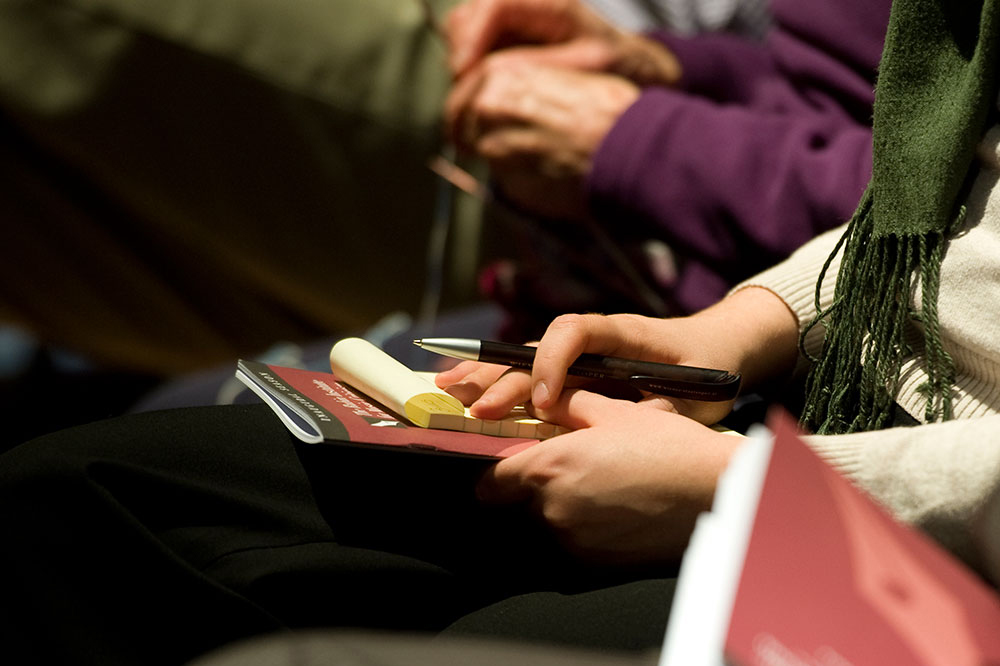 |
 |
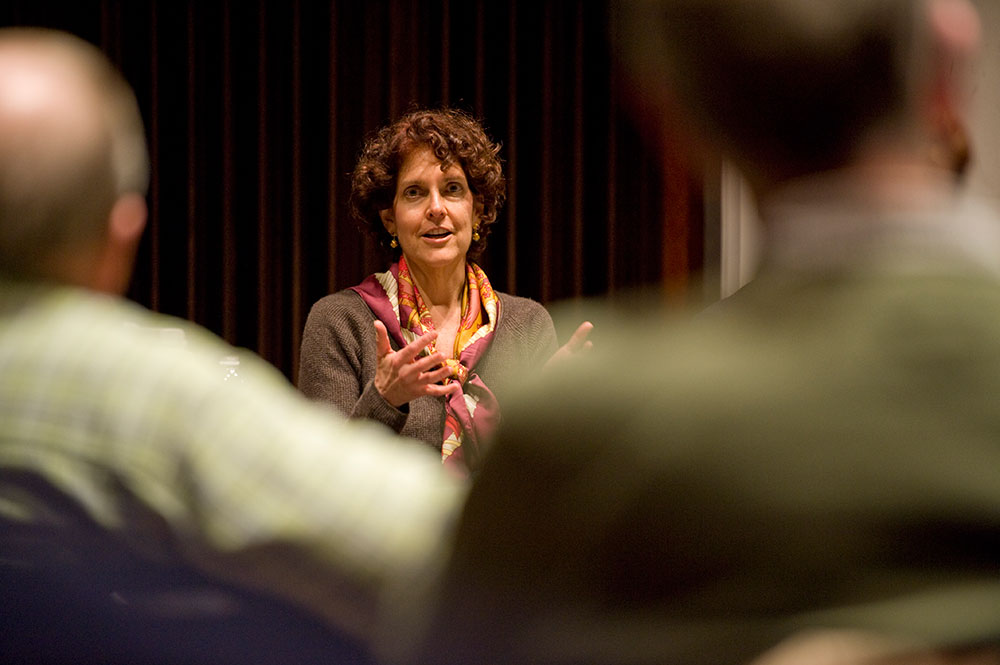 |
Think Like a Critic
A packed schedule challenged the students to learn and produce swiftly. The lineup consisted mostly of third- and fourth-year students, but included two sophomores—Matt Young, a double-degree student in piano and english; and Gabe Kanengiser, who created his own major in creative writing and arts management—and a master’s student in historical performance, organist and harpsichordist Jake Street. Four were pursuing degrees in the college, four in the conservatory, and two were double- degree candidates. All had musical training.
The critics decided that the students would benefit from hearing critiques of each other’s writing as well as their own, and from multiple perspectives. Accordingly, we divided the senior critics—and eager participant Stephen Rubin—into two teams, each of which would work with five students every morning.
They had top-flight material to practice on. The first evening’s concert featured the Cleveland Orchestra conducted by its music director, Franz Welser-Möst. Next came a recital by pianist Jeremy Denk ’90; a concert by the period-instrument orchestra Apollo’s Fire, led by Jeannette Sorrell ’90; and one by the International Contemporary ensemble—ICE, for short—headed by Claire Chase ’01.
The novice critics faced a punishing schedule: the first three reviews ranged from 500 to 750 words, and each was due at 8:00 the following morning; the final review was due mere hours after the conclusion of the performance. Every morning at 10, the students faced the senior critics nervously, as though waiting for the ax to fall.
Those morning sessions, if nerve-wracking for the students, were fascinating to the rest of us. It was intriguing to see what these young writers responded to, how they framed their thoughts, what they were passionate about, and where their blind spots were. As musicians themselves, they would often zero in on technical details of execution. Some would open with grand framing images and then struggle to maintain them throughout the piece. Some had clear biases—singling out individual orchestra players by name but failing to mention the conductor, for instance. There were dramatic differences of opinion about the quality of particular performances.
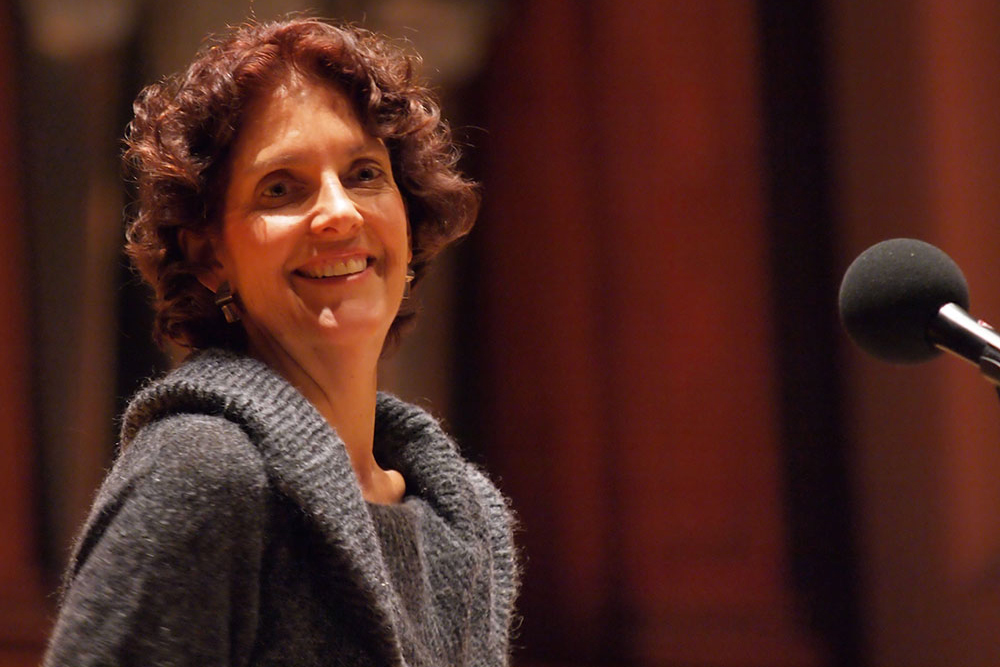 |
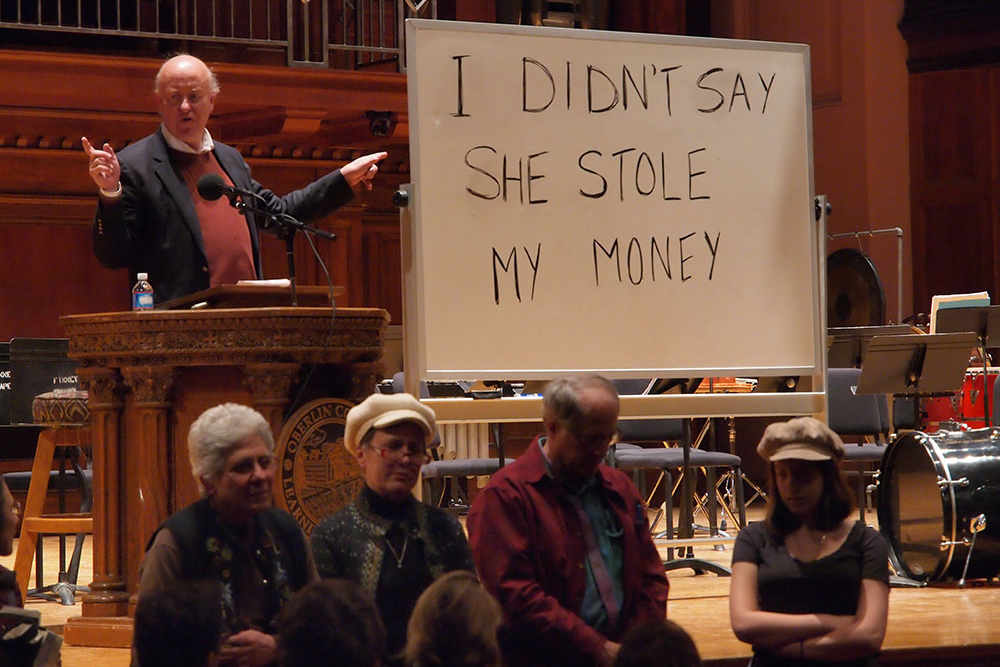 |
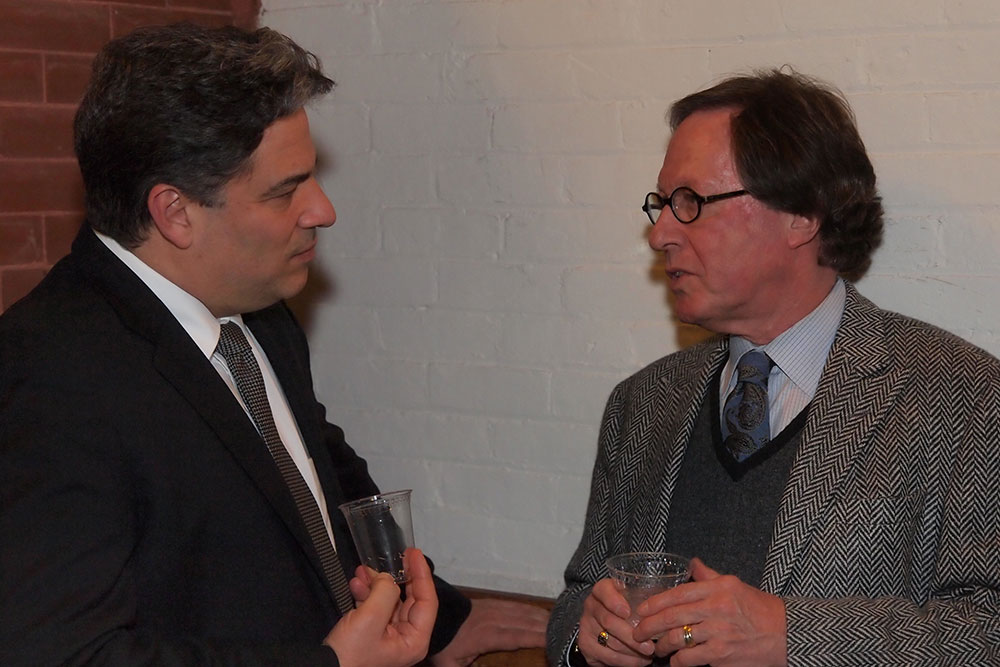 |
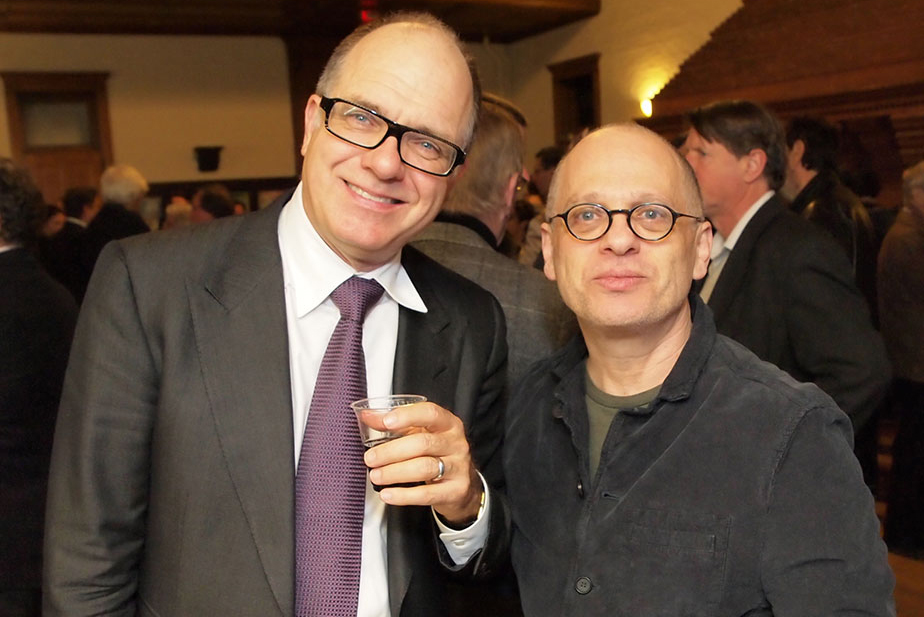 |
 |
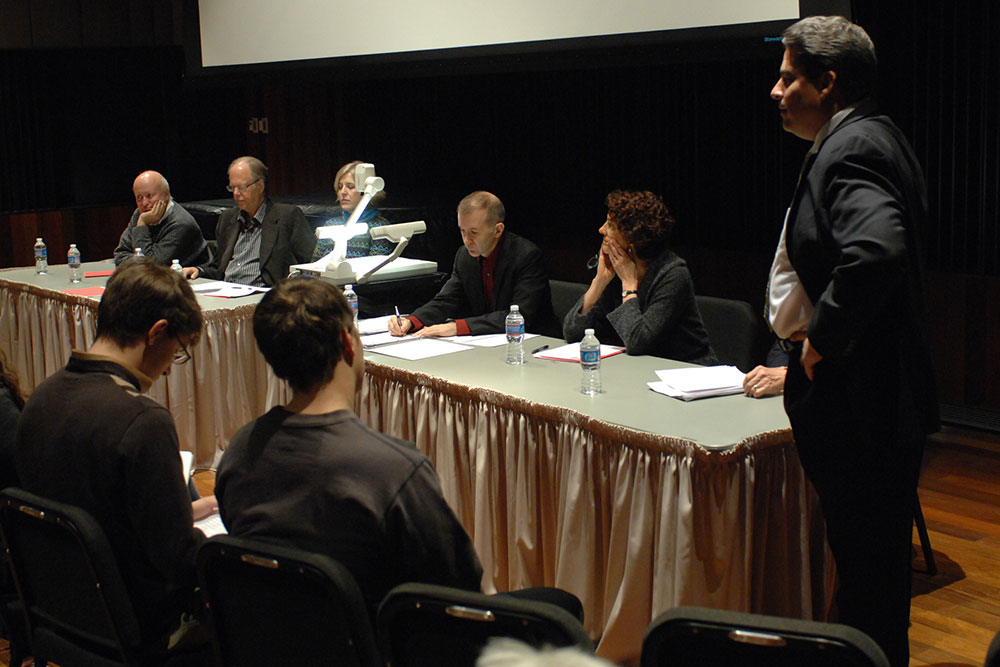 |
But there was a lot of ambitious writing. the critics responded to the telling moments of description, like this detail from senior Megan Emberton, on Shostakovich’s Symphony No. 6: “...an absurdly upbeat second movement ending with a sly chromatic scale—the parting wave of a cat’s tail disappearing around the corner,” or junior A.D. Hogan’s suggestion that ICE’s performance “sprinkled fertilizer” on Xenakis’ Thallein. Evocative conceits shaped some of the reviews, such as Jake Street’s witty, thoughtful analysis of Jeremy Denk’s concert as an “attempted pianicide” and senior Chad Putka’s clever, engaging image of Denk, sustained throughout the review, as a child at play.
The critics’ goal was to harness the students’ listening acuity and ideas about expression into reviews that would tell a reader who wasn’t there what happened. Not just what, where, and when, but how it felt and why it mattered; opinions backed with concrete detail, expressed in vigorous writing. Storytelling became a key strategy: learning to create a frame and a narrative thread, and to make choices about what to include and what to leave out. they were urged to push for clarity, for exactness in description, and to avoid the bland, the formulaic, the placid or detached review.
Questions of prior knowledge and background surfaced. We were surprised to find that some students had little exposure to the historical performance and contemporary music featured in the last two concerts. this prompted discussion of how much preparation critics must do and how self-deprecating of your own lack of background you can be without undermining your authority. It also brought up the larger issue of the critic as generalist and specialist. As retired New York Times critic and arts editor John Rockwell pointed out, there will certainly be someone out there who knows everything about 16th-century polyphony (and is probably writing exhaustively about it on the Internet), so you had better know something if you’re going to review it.
The critics encouraged students to incorporate more first-person material into their reviews, and they did. We also debated how much personal revelation is appropriate. (I felt that some of the writing, perhaps influenced by the very first-person nature of blogging, tended too far toward the personal essay, so that there was more information being conveyed about the writer than about the event. A fellow critic insisted that a review is a personal essay. We agreed to disagree, and the students realized that there’s no single right way.)
Most of all, we urged the students to speak with their own voices. A.D. Hogan, a violist majoring in politics, said the institute illuminated a completely new path to writing. “It opened up room for me to write without pressure,” Hogan said. “I wasn’t writing for a grade. there was the $10,000 prize, but by day three, I didn’t care about that. It gave me freedom and pushed me into finding a voice.”
Not that it was easy. “It was terrifying,” Hogan said. “I feel more vulnerable writing about music than in academic writing. I have more flesh in the game. I love [the music] so much, I feel a responsibility to communicate it well.”
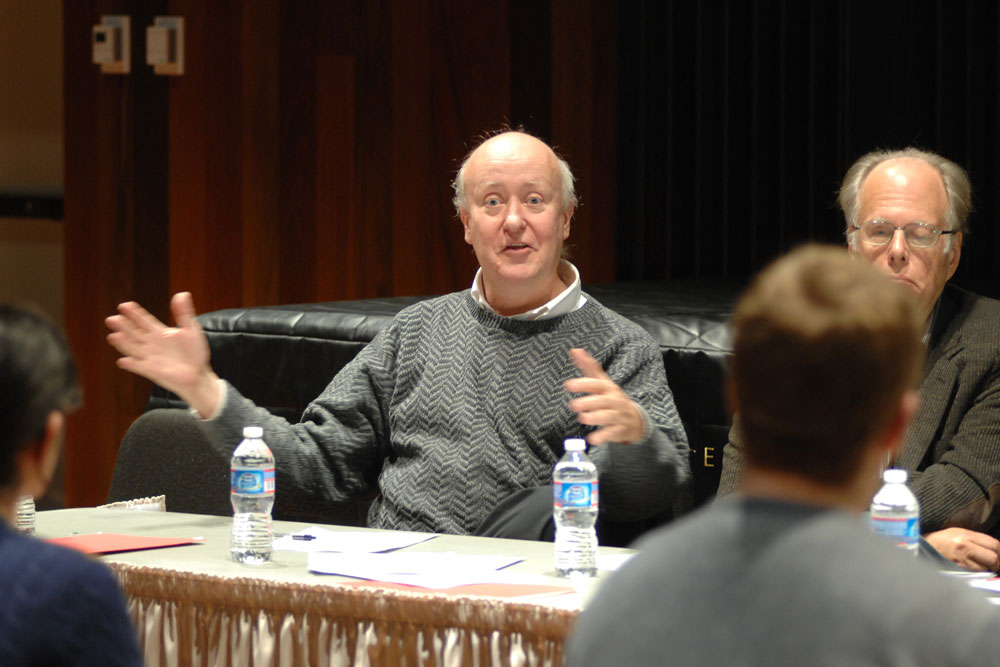 |
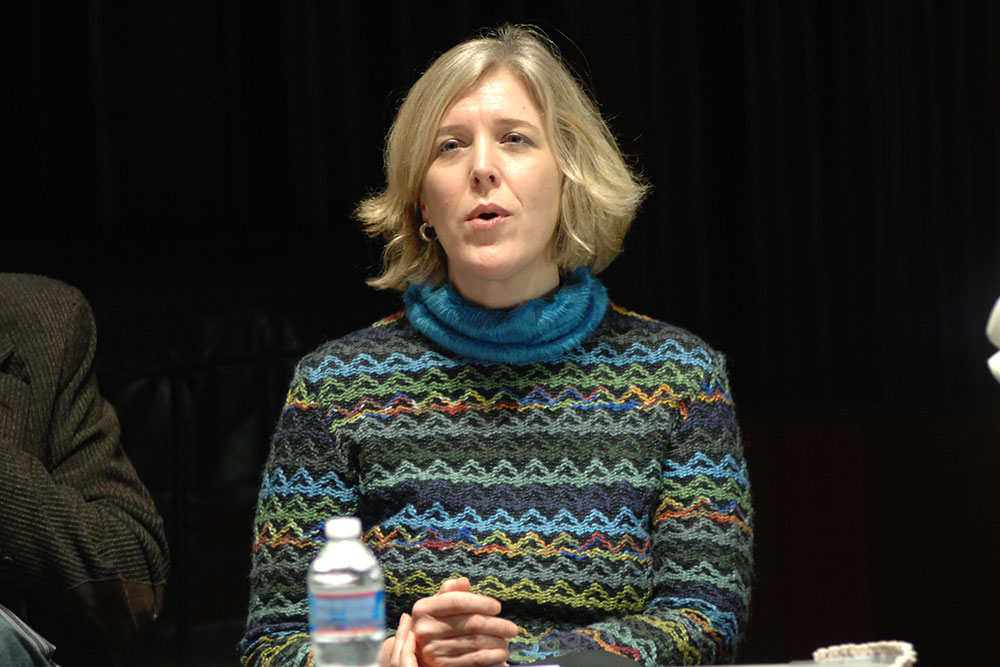 |
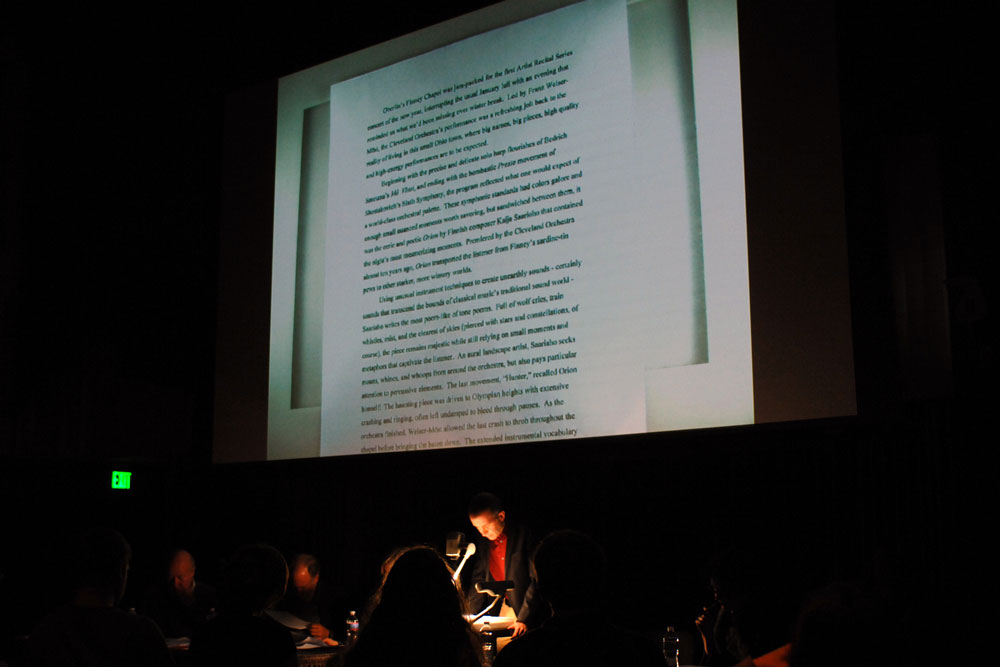 |
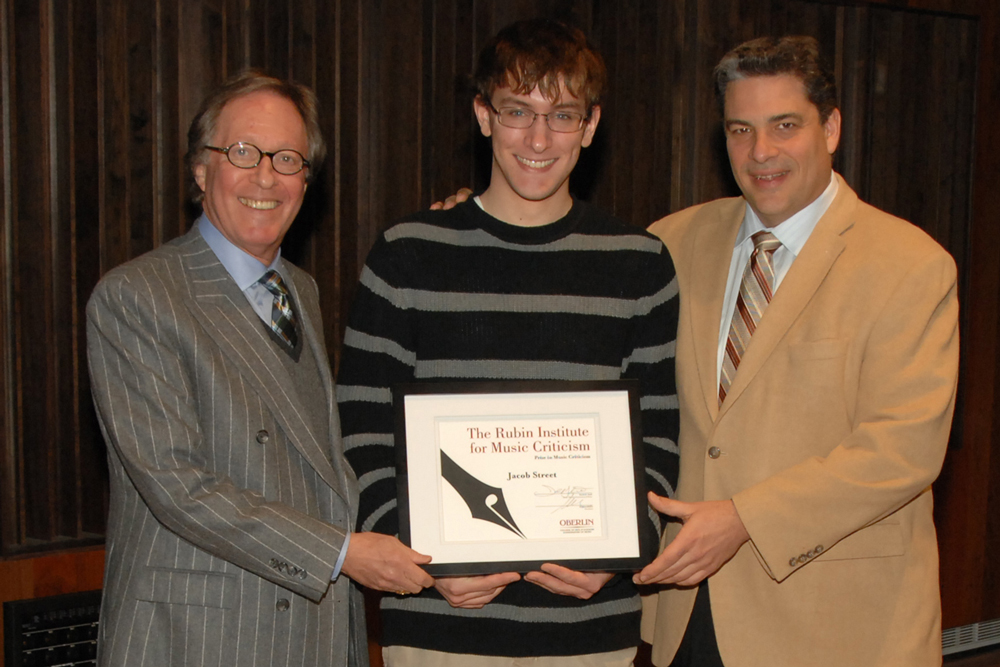 |
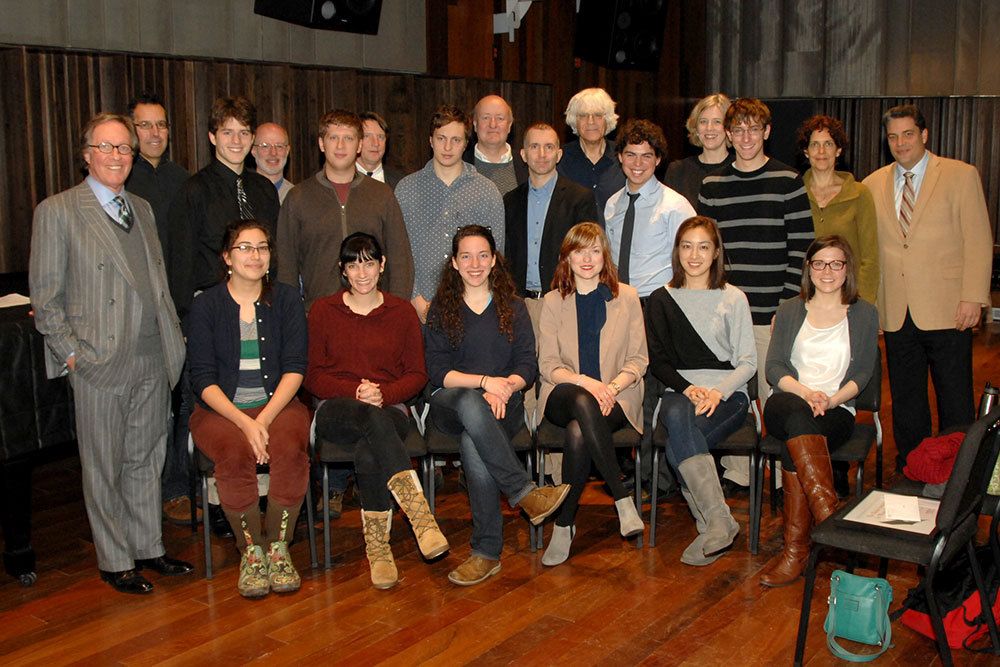 |
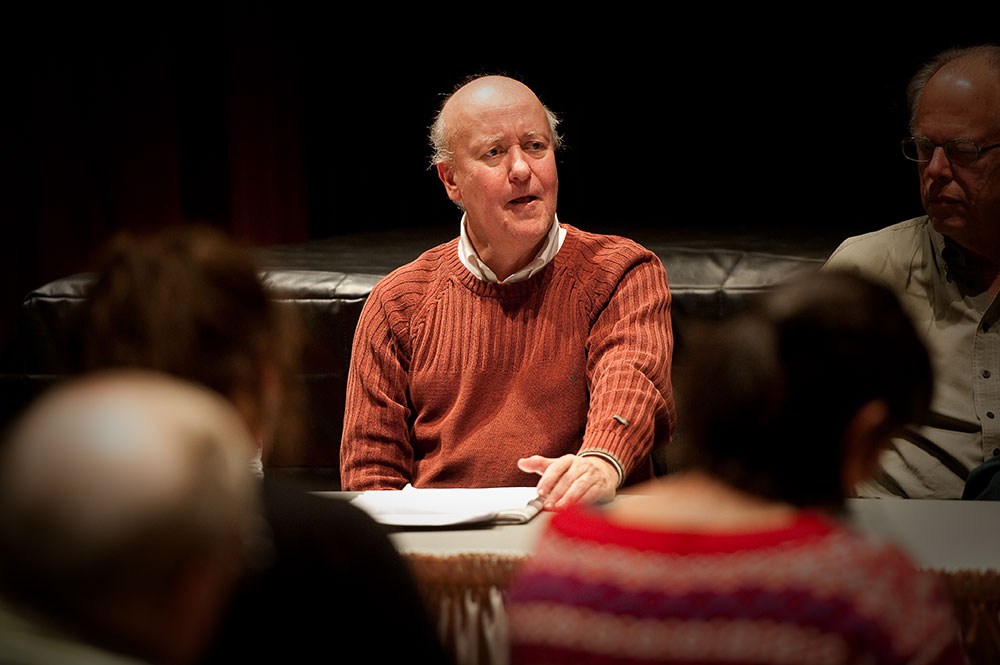 |
Hope Amid Journalism’s Hopelessness
During well-attended public sessions—the keynote addresses and three afternoon panel discussions—the senior critics talked about their own varied career paths and how their world has changed. there was much discussion—some of it quite gloomy—about how arts criticism faces a transitional moment. The shift from print to web is a double-edged sword: Opportunities abound with the explosion of the Internet, where anyone can be a critic; but as newspapers trim staffs and go out of business, it is increasingly difficult to be paid for being one.
With only a dozen or so full-time jobs for music critics now in existence, what is the future of the profession? In his keynote, Alex Ross questioned the web mantra “information wants to be free” and wondered how serious criticism can survive if no one is paid to produce it. John Rockwell offered a slightly more hopeful prognosis, noting that just as television did not eliminate radio, the emergence of new technology simply adds a new sedimentary layer. “The future of professional criticism is tied to the future of classical music,” he said. “to the extent which music finds a new vitality, so will be the opportunities to expand coverage.”
Also noted was the positive side of the shift. In addition to providing new opportunities and outlets for writers, the Internet has altered the nature of criticism and commentary. Blogs like Ross’ “The Rest is Noise” curate news of interesting musical events and share it with enthusiasts; posts can have sound and video files embedded in them, enrich- ing the medium; they can appear quickly. And no longer do a handful of critics make olympian pronouncements into the void; instead, there is instantaneous feedback and debate on reviews and blogs such as Anne Midgette’s for the Washington Post. As Rockwell remarked: “the critic provides a focus for an ongoing conversation. that’s still one of the most exciting offshoots of the musical experience, and it won’t go away.”
One afternoon, a panel of artists—pianist Jeremy Denk, composer David Lang, and ICE founder Claire Chase—talked about their challenges and how musicians adapt to changing times. They also dealt with their own attitudes toward critics and admitted to wanting more of them—even to occasionally being inspired by negative criticism. As long as there are critics, they know that someone is paying attention.
Meet the Critics
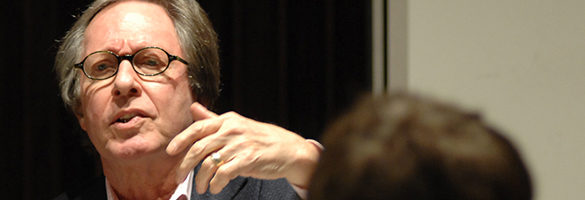
Stephen Rubin
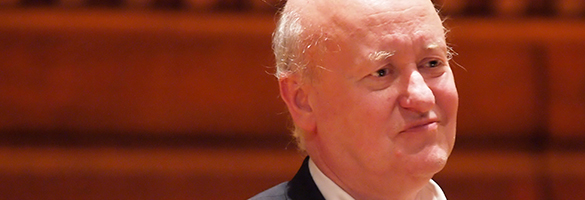
Tim Page
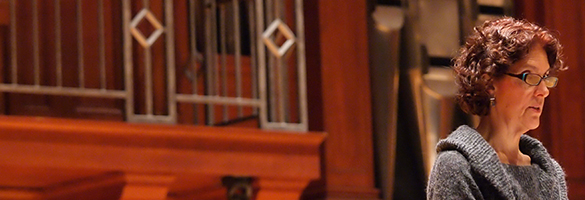
Heidi Waleson
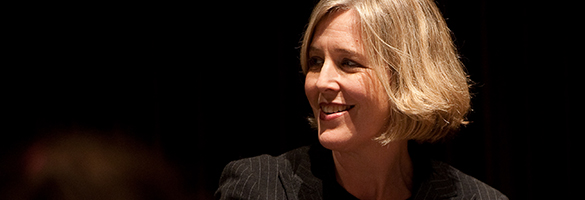
Anne Midgette
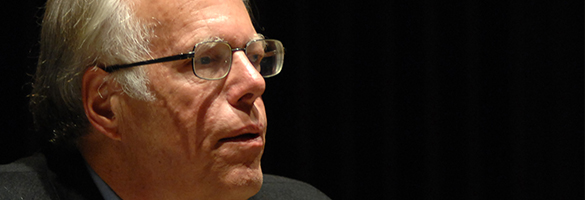
John Rockwell
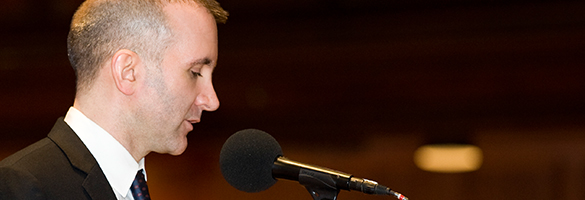
Alex Ross
Shaping the Future of Criticism
By the end of the final concert and review, it was clear that each student had made remarkable progress, improving their writing and their command of what they wanted to say while gaining a new appreciation for the role of criticism in the arts. After considerable debate, the $10,000 prize was awarded to Jake Street, a deft, expressive writer—and, as I heard in his master’s recital a few months later, a fine harpsichordist whose wry sense of humor carried over into his program- ming. An honorable mention prize of $2,500 was awarded to Megan Emberton, who impressed with her forthright, stylish writing.
Stephen Rubin, who bankrolled the institute and was an enthusiastic contributor throughout, considers travel a wonderful use of the prize money. He pointed out that he was inspired by how Alex Ross, as a young critic at the New York Times two decades ago, was advised by John Rockwell to spend a few months in Europe hearing as much music as he could.
Jake Street took that suggestion to heart: In September 2012, he used his winnings to travel to europe, where he soaked up music in Germany, France, and England; placed second (out of 31 competitors) at the International Buxtehude Organ Competition; and scouted potential teachers for a Fulbright fellowship.
“The trip was among the most formative experiences of my life and certainly gave me new perspectives on all kinds of music,” he said. “Experiencing the best examples of one’s art, up close and personal, seems to me to be the best way to learn, and I had a remark- able opportunity to hear a lot of music at its absolute best.”
Now based in Boston, Street is working as a church organist. He recently learned that his Fulbright application has been accepted.
Emberton also traveled to a new place: She landed a 2012 summer internship with Symphony Magazine in New York and used her award to cover expenses there. She conducted interviews, wrote online articles, and learned firsthand how a magazine is put together.
“I would never have been able to live in and experience New York for a couple of months without the prize money,” she said. Emberton lives in the Ann Arbor area, where she is accompanying dance classes and writing.
Will the institute turn any of the students into critics—particularly since most of them had no intention of pursuing such a career when they took the fall semester course?
Perhaps it already has. Samantha London, a master’s student in piano at Western Michigan University at the time of the institute, attended one of its public programs and won a $1,000 audience prize for criticism. this spring, she completed a year-long master’s program in journalism studies for the arts at the University of Southern California—in a program run by Rubin Institute critic Tim Page.
